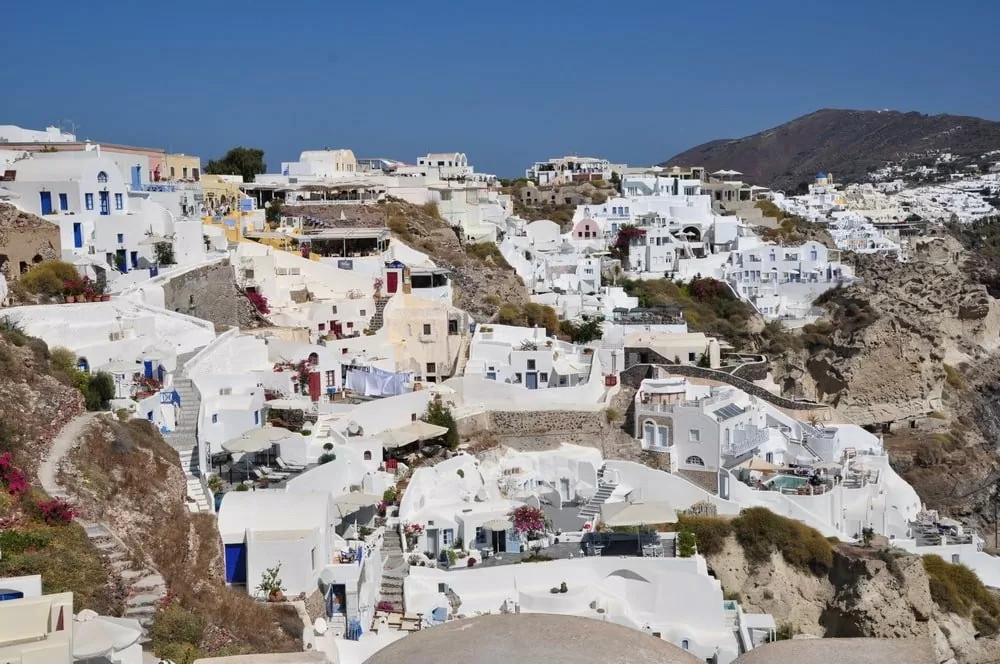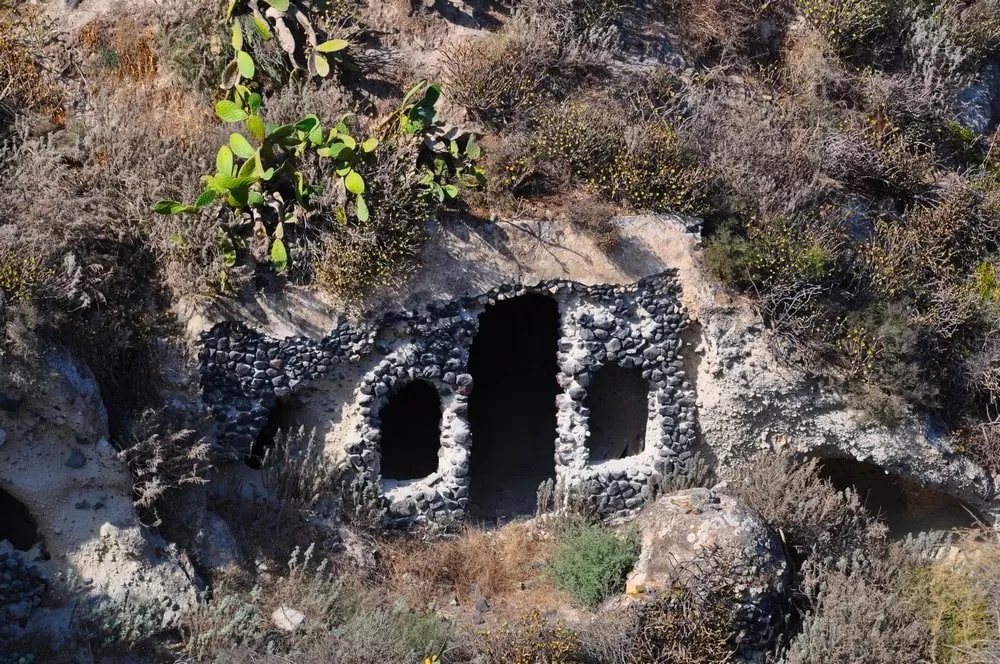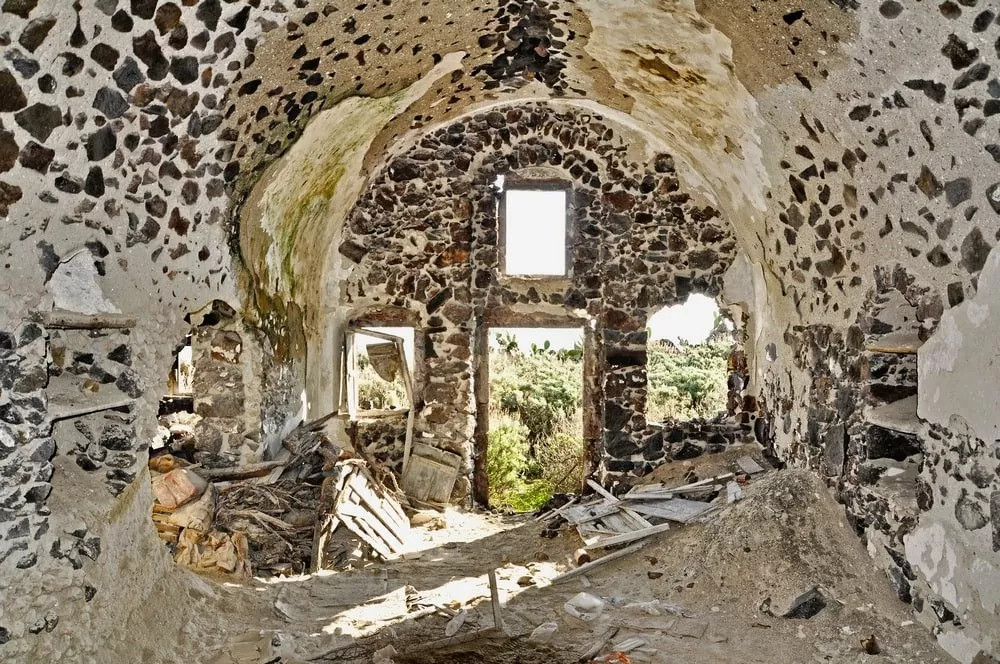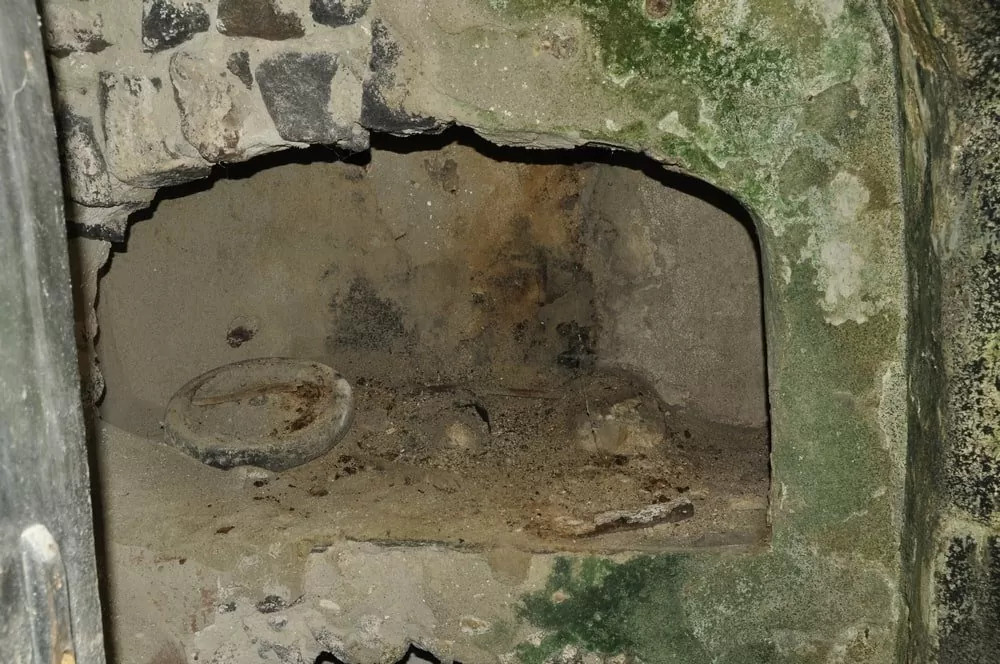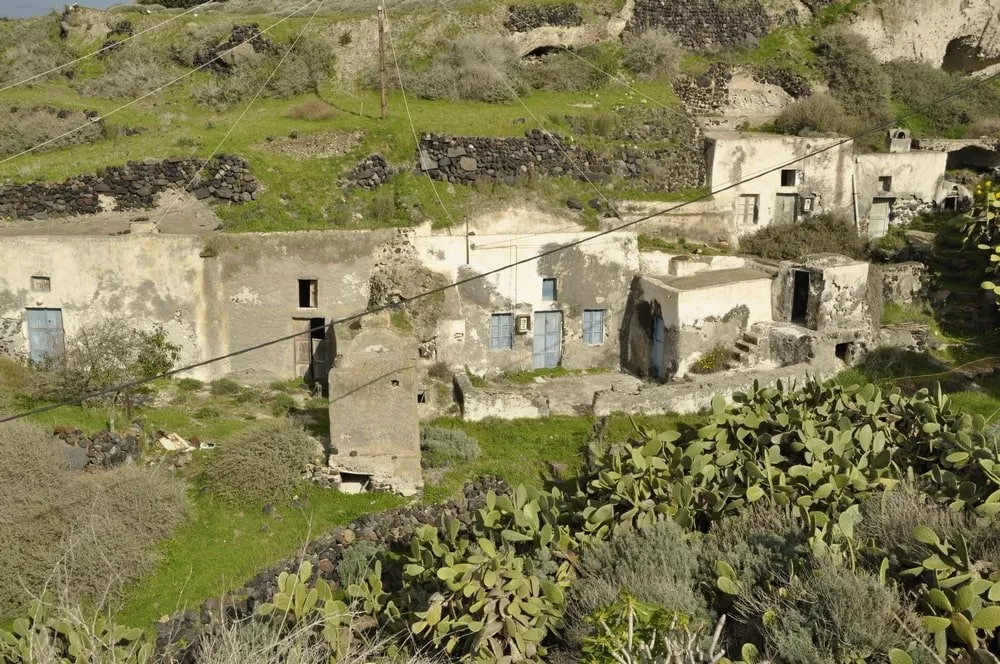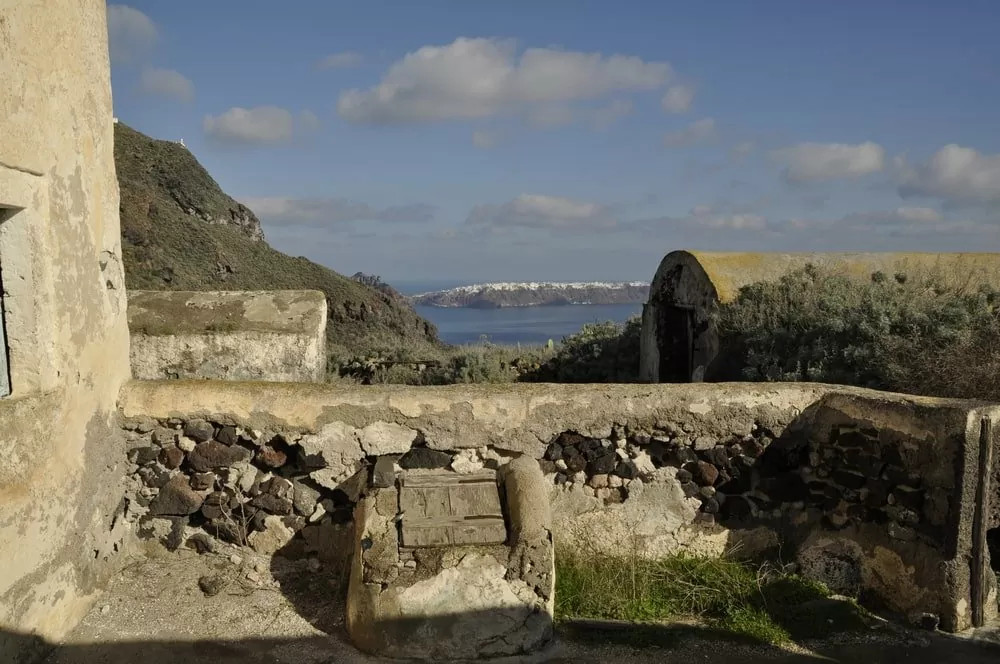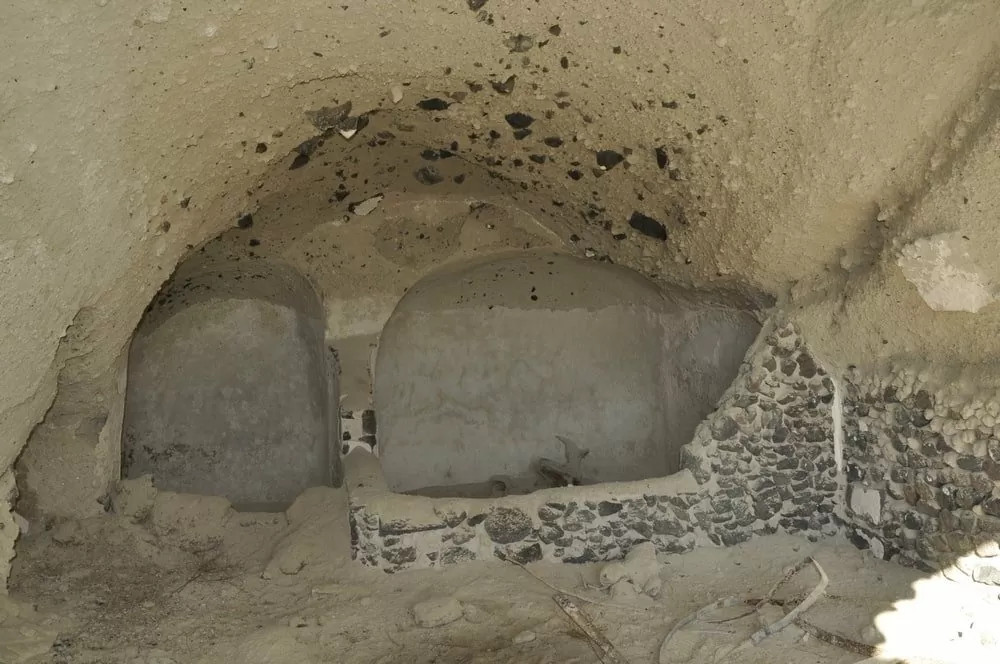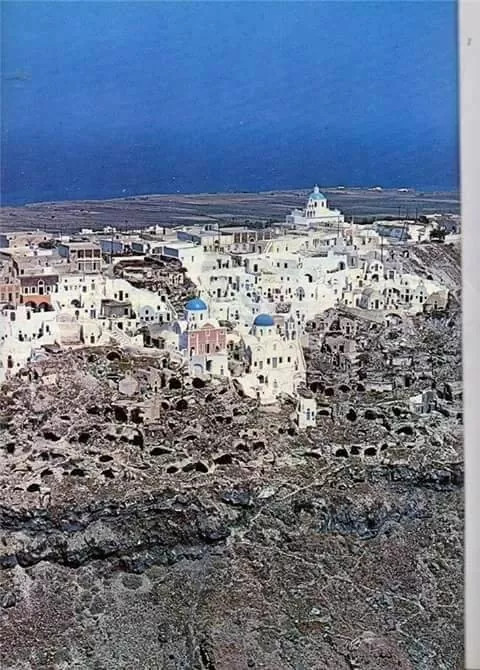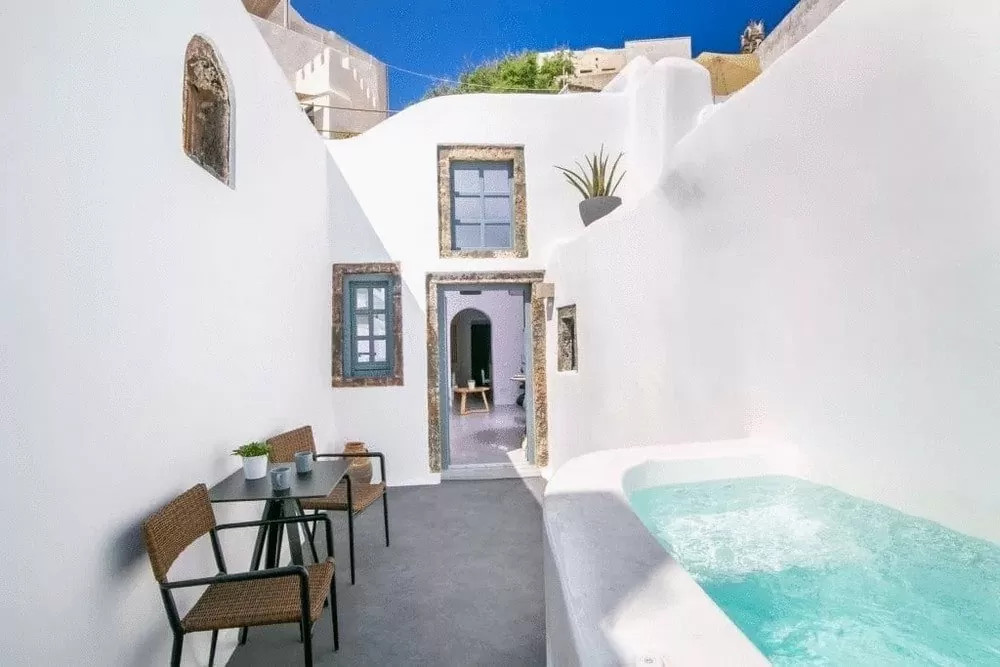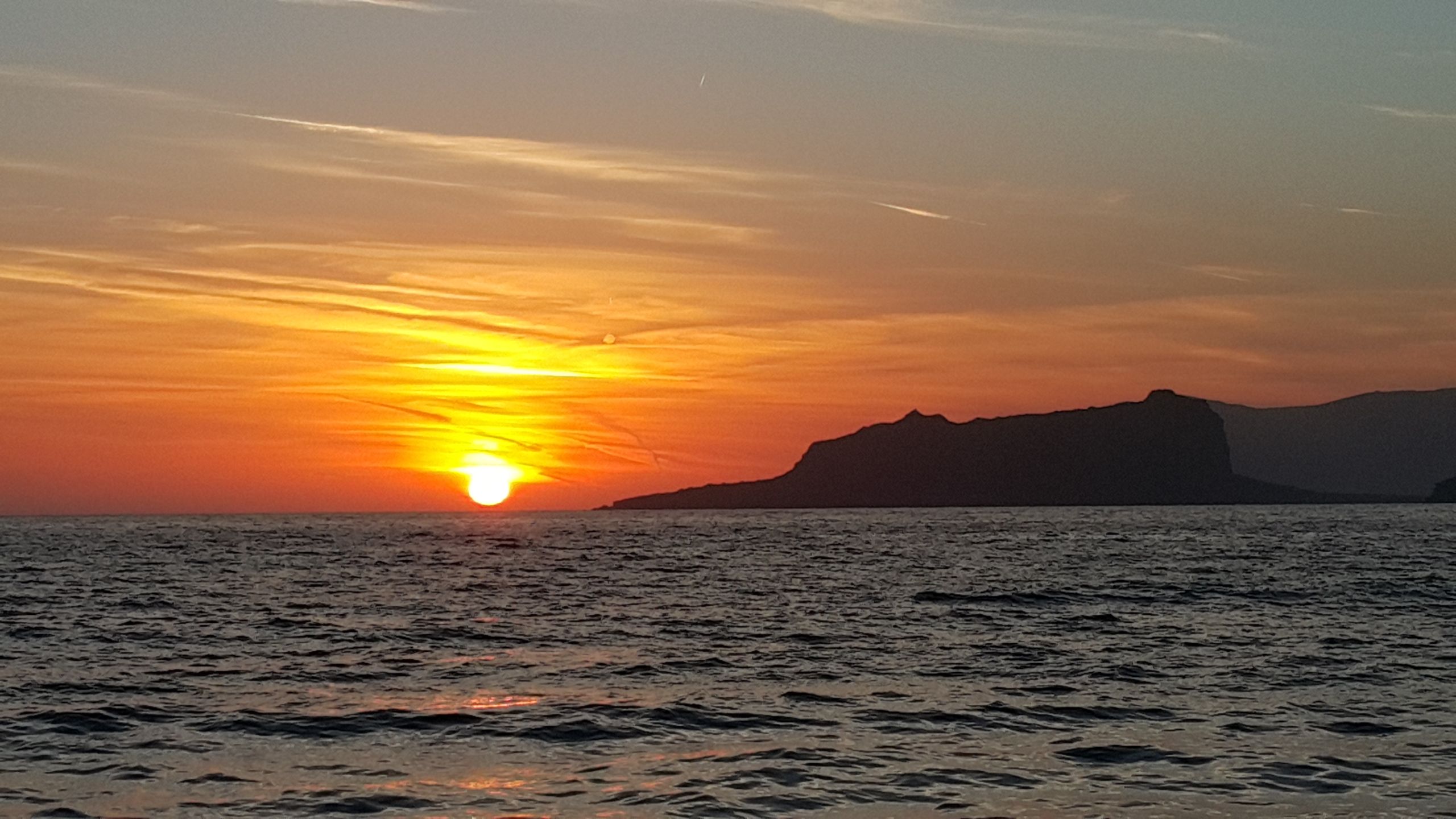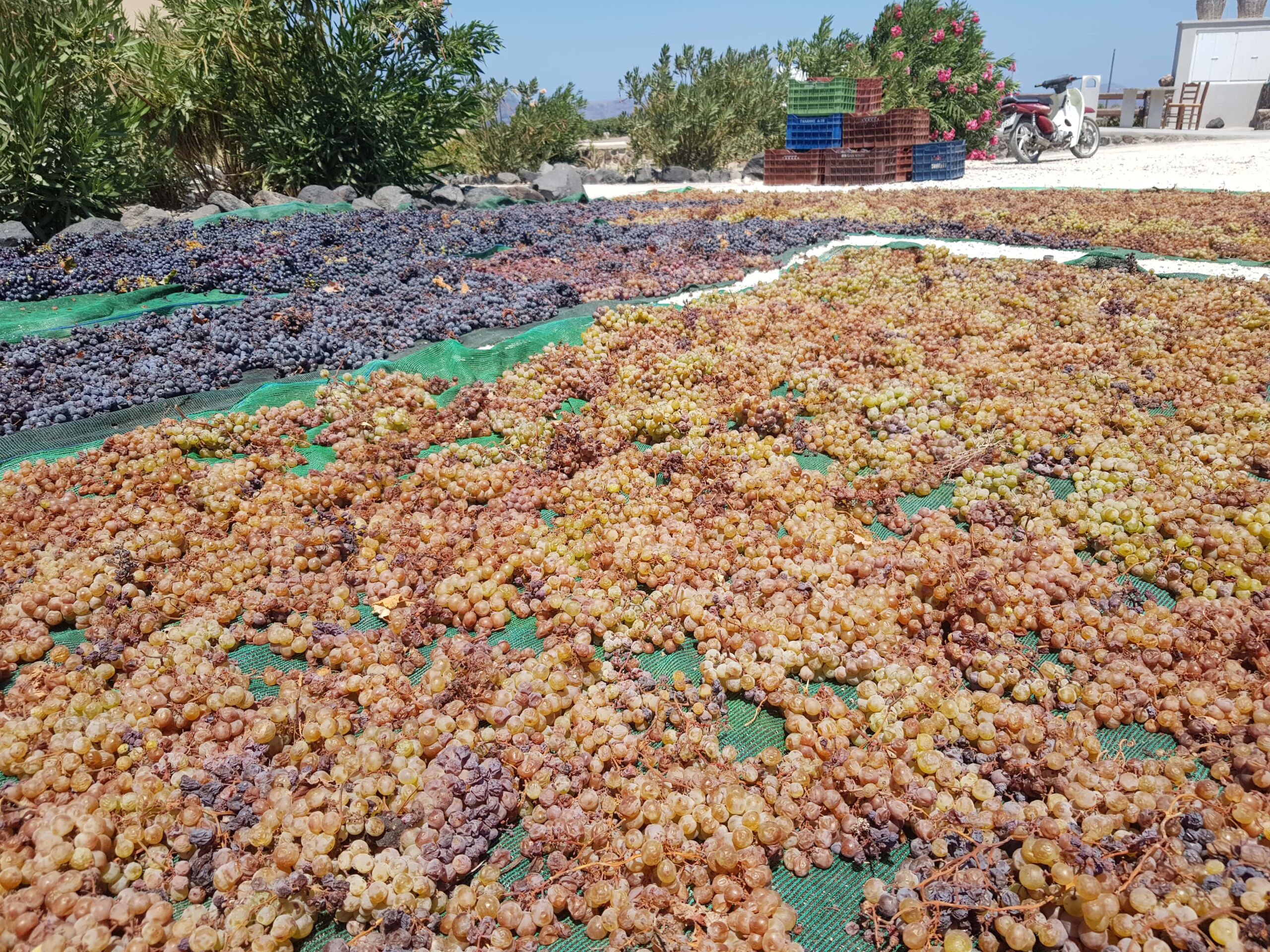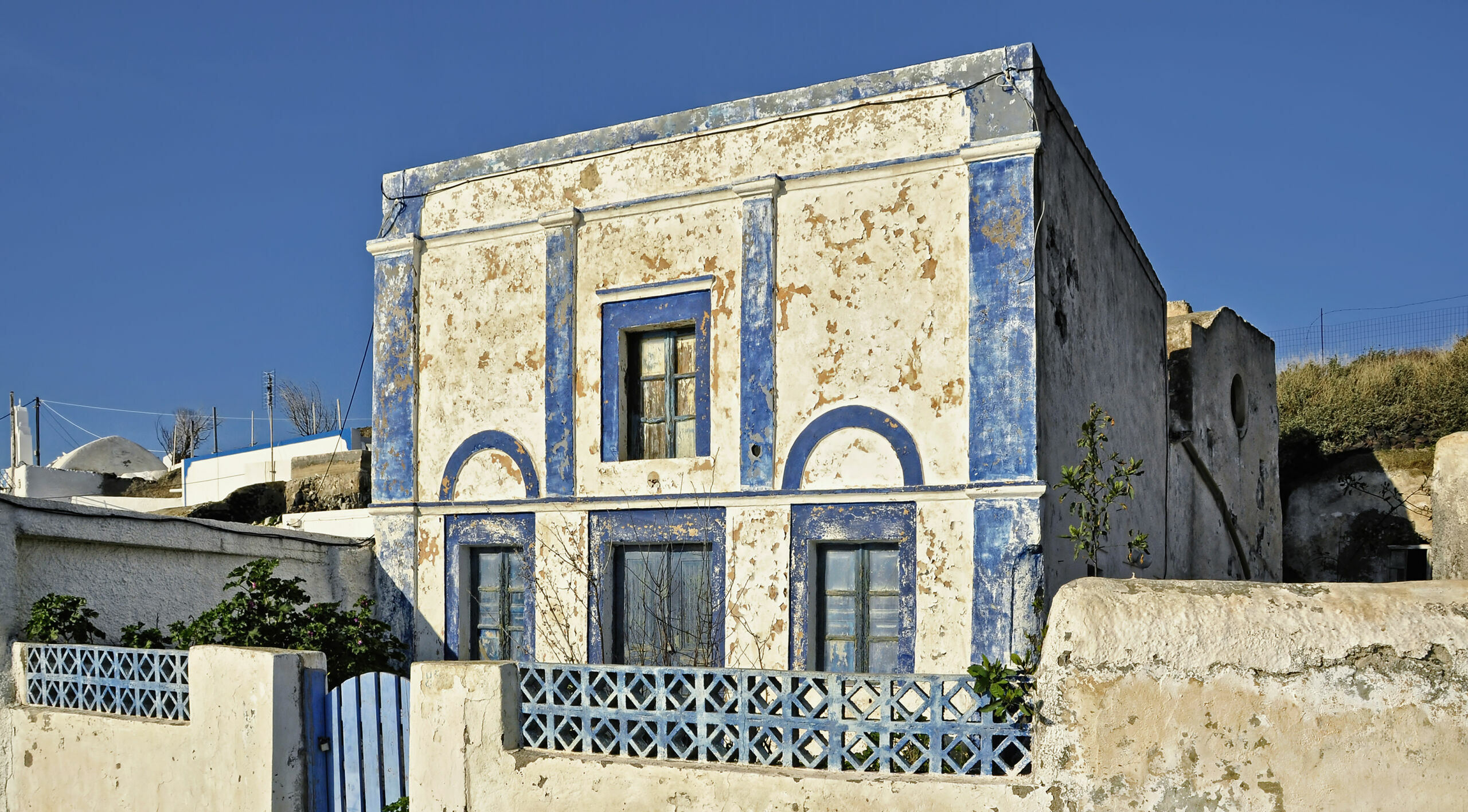What makes Santorini so Instagramable is nothing but its unique and harmonious landscape. The blend of simple architecture, rocky cliffs, and Aegean blue attracts the most romantic visitors who dream of immersing in the majestic view of the Aegean from a whitewashed house dug into the volcanic rock. Nestled into the cliff, Santorini cave houses offer a breathtaking experience.
The uniqueness and aura of mysticism that surrounds them are what makes them an unparalleled luxury destination today. However, the Santorini cave house’s history is not that glamorous. These luxury properties were once home to the impoverished.
Minimalistic, imposing, and distinctive at the same time, they create the perfect setting. Before you go on one of our Santorini day tour, come explore with us the fascinating story behind the surreal architecture of the most important symbols of modern-day Santorini.
The origins of Santorini’s minimalist architectural miracles
Santorini Cave Houses or yposkafa, which translates to “dug into a rock”, are underground buildings once used as homes, churches, canaves, and warehouses. They are famous both for their cubic form and their white color which reflects the light.
The architecture of yposkafa in Oia follows the natural lines of the caldera, offering us the magic landscape, but it is not the only place you will see them in Santorini. The yposcafa can be found anywhere on the island as their design is related to the island’s landscape and history.
Because of its geographic position, Santorini was historically used as an important center of shipping within the Mediterranean Sea. Until the beginning of the 20th century, a wharf was located in the bay of Armeni beneath Oia.
It was home to a fleet of approximately 130 sailing boats. For this reason, many ship owners and their crews lived in Oia. However, the homes the ship owners built were far too expensive for their crew members. And that’s how the Santorini’s cave houses history begins.
The humble beginnings of Santorini cave houses
The Santorini cave houses history came about due to intense poverty. The lowly crew members of ship owners and sea captains were not able to build their houses on top of the hill in Oia and had to come up with alternative housing.
The peculiarity of the volcanic terrain of Santorini offered a much cheaper alternative: it allowed the inhabitants to carve a building into the earth. These cave houses were once the smallest homes on the island. They stood in great contrast to the two-story neoclassical mansions built by the wealthy ship owners.
They were truly cave-like, reminiscent of ancient times: oblong, carved into the Theraic earth, without foundations, with a vaulted ceiling and a narrow facade. Theriac earth, mixed with limestone found at Profitis Elias mountain, formed a sturdy plaster that solidified with humidity, becoming harder over time.
Theriac earth also contains pumice, a porous, froth-like igneous rock, and a bad conductor of heat and sound allowing cave houses to be kept warm in the winter and cool in the summer. Perhaps most importantly, they showed high resistance to earthquakes.
The old, simple interiors of Santorini cave houses
The traditional Santorini cave houses usually consisted of only one room. The cooking place was outside to prevent smoke disturbance. Also called firecrackers, it was made up of two stones. In between those, the wood was lit to heat the cooking cauldron.
The toilet of the cave houses was usually in a separate room outside the house, and it was raised, reachable over some steps. In the space created underneath, the sewage was collected and transported to the fields used as fertilizer.
The “cistern” was the only source of water. The rainwater that fell into the yard or the roof and passed through the gutters was collected there. As a filter, they used small sticks tied in a bunch that was placed in the trenches.
Also interesting are the other elements of the construction, such as carved recesses, built furniture, stairs, ovens, chimneys, and flower beds in the yards. These homes were small and humble but ultimately provided protection from the harsh elements and met the basic necessities.
Today’s lavish and celebrated Santorini cave houses
While some of Santorini’s cave houses still maintain their humble roots, many of them would be unrecognizable to the impoverished who built them long ago. Long gone are dilapidated homes with modest interiors and simple living.
In fact, the former shelter for the poorest of the poor in Santorini has been transformed over time into some of the most luxurious and modern suites and hotels. Often painted in classic white and styled impeccably, today’s cave houses are a synonym for opulence and class.
Today’s Santorini cave houses offer some of the best views of the island, which makes them well worth their value as you can enjoy the scenery from the comfort of your bed. They are the perfect hideaway for couples on a romantic getaway, especially those on their honeymoon. Just as the Demeter Cave House in Pyrgos, a stunningly designed, stylish, and well taken care of cave house beckons its guests.
The history of Santorini cave houses is a long and storied one. These magnificent buildings are waiting to be explored! Get in touch to design your own tailor-made Santorini private tour so that you can explore these structures with the help of an expert guide.
FAQs about Santorini cave houses
1. Why are Santorini cave houses white and blue?
It is believed that the houses in Santorini and all Cyclades islands were painted white and blue to reflect the colors of the Greek flag or the beauty of the Aegean. However, the main reason behind this choice seems to be an outbreak of cholera in 1938. The citizens were ordered to paint the buildings with lime, a white antibacterial material, to end the spread of the disease. Ever since the color became a trademark of the Greek islands.
2. What are houses in Santorini made of?
The builders of Santorini cave houses used natural construction materials, including stones and theran earth, a volcanic product that today is one of the most popular environmentally friendly materials. Santorini cave houses are considered to be bioclimatic buildings.
3. What is Cycladic architecture?
Cycladic architecture is represented by cubic houses oriented to the southeast to catch the sunlight. The houses are usually painted in white and blue. One of the most notable examples is the Santorini cave houses, built along the caldera, overlooking the Aegean Sea. Other important elements of Cycladic architecture are churches with blue domes, cobblestone paths, and windmills.
4. Which Greek islands have cave houses?
Santorini, Crete, Amorgos, Milos and Rhodes are only a few of the Greek islands that boast cave houses.
Related Articles
Information, news and secret tips about Santorini

